Main menu
Common skin conditions

NEWS
Join DermNet PRO
Read more
Quick links
Author: Dr Amanda Oakley MBChB FRACP, Dept of Dermatology Waikato Hospital, Hamilton, New Zealand, 2004. Reviewed and revised, May 2014.
Dermatitis
Scaly rashes of the lower legs
Infections
Redness of the lower legs
Lower leg ulcers
Management
Most often, a rash affecting the lower legs is a type of dermatitis. The terms ‘dermatitis’ and ‘eczema’ are often used interchangeably. Acute dermatitis presents as red, swollen and blistered plaques. Chronic dermatitis accompanied by rubbing and scratching results in darkened (hyperpigmented), and thickened (lichenified) plaques.
There are several different types of lower leg dermatitis:
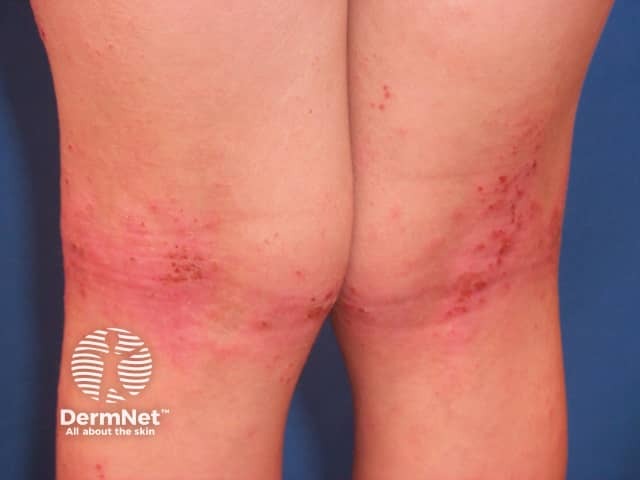
Atopic dermatitis
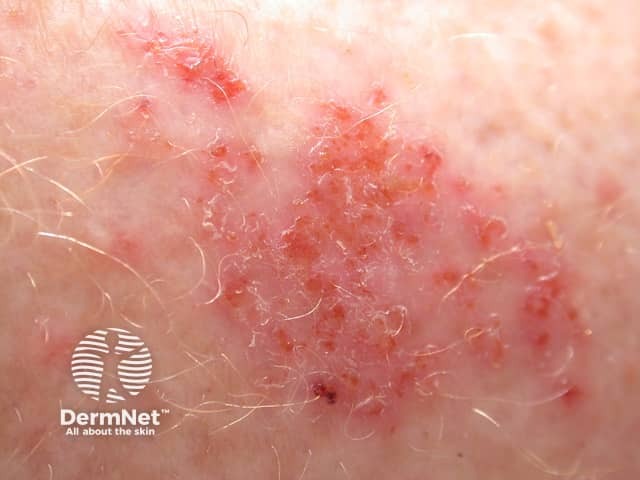
Discoid eczema
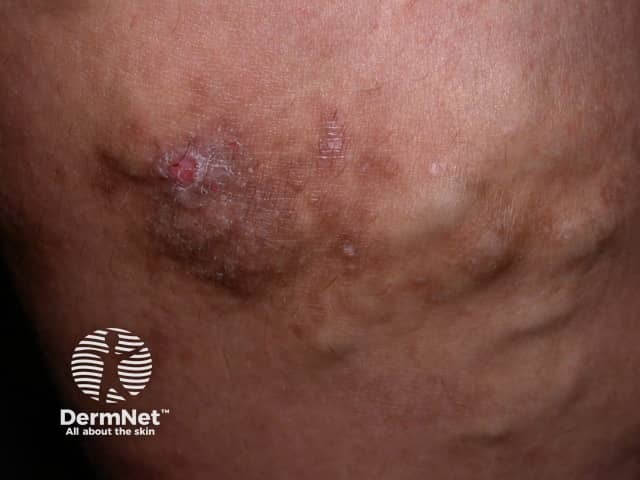
Varicose dermatitis
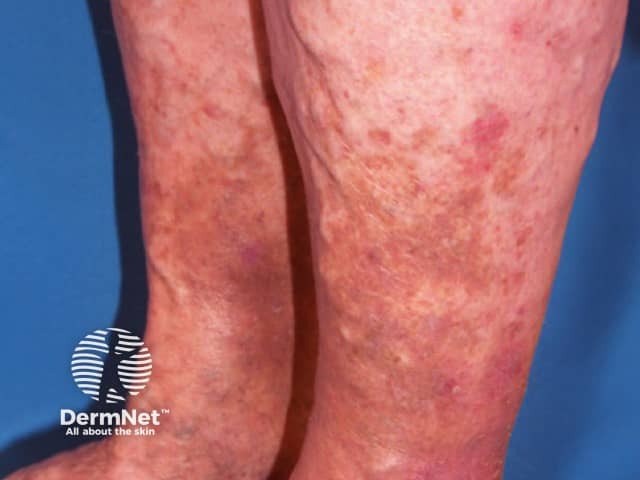
Gravitational dermatitis
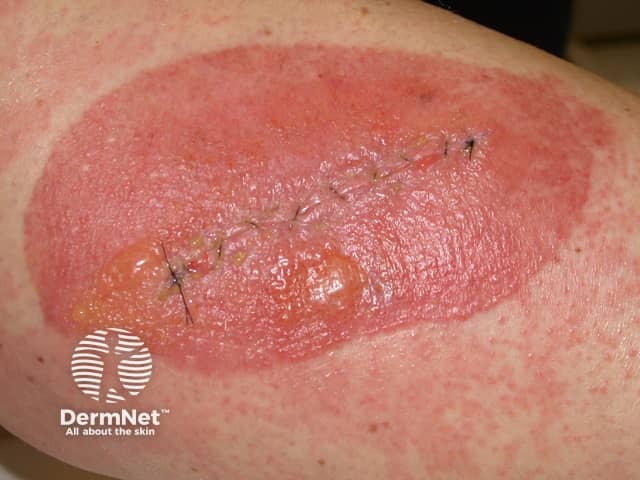
Contact dermatitis
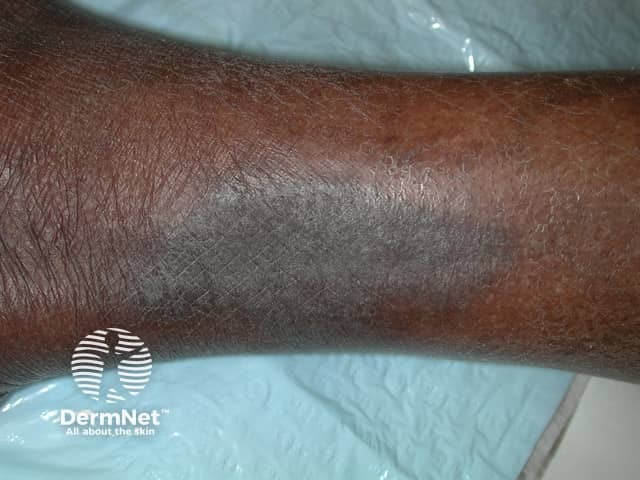
Lichen simplex
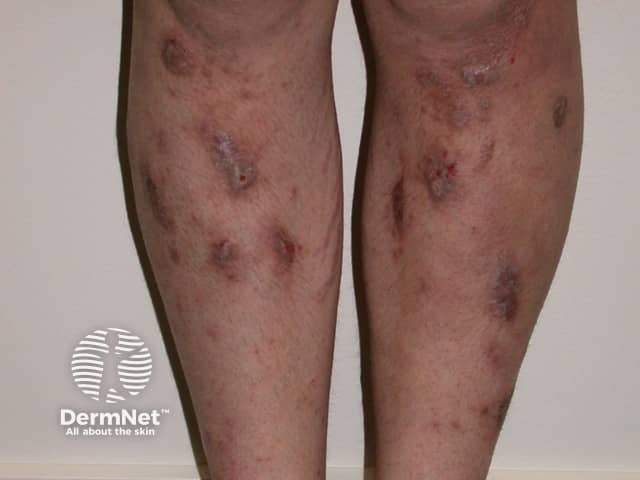
Prurigo nodularis
Scaly conditions affecting the lower legs include:
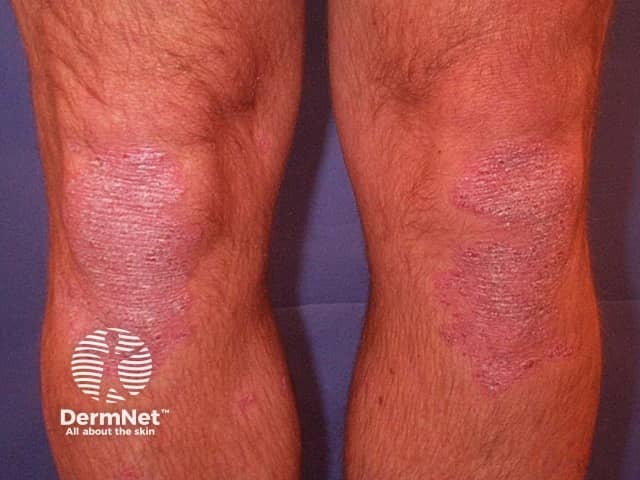
Psoriasis
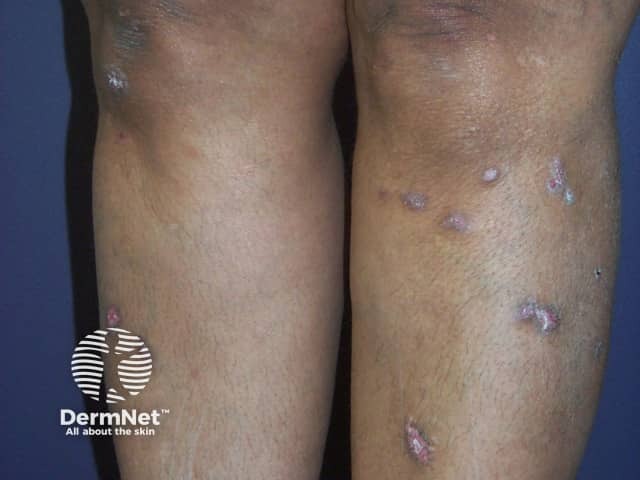
Lichen planus
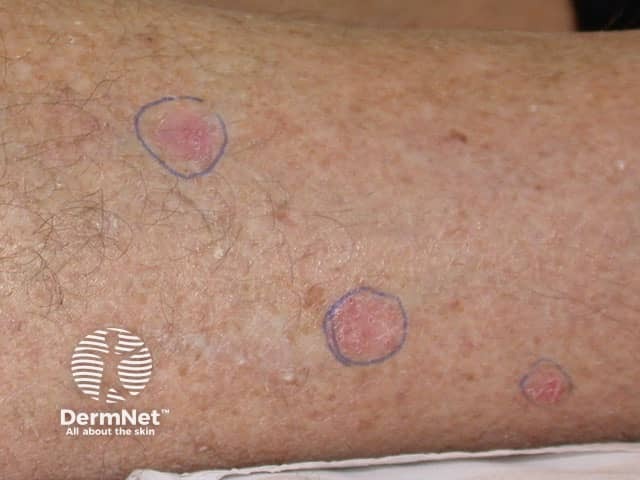
Superficial basal cell carcinomas
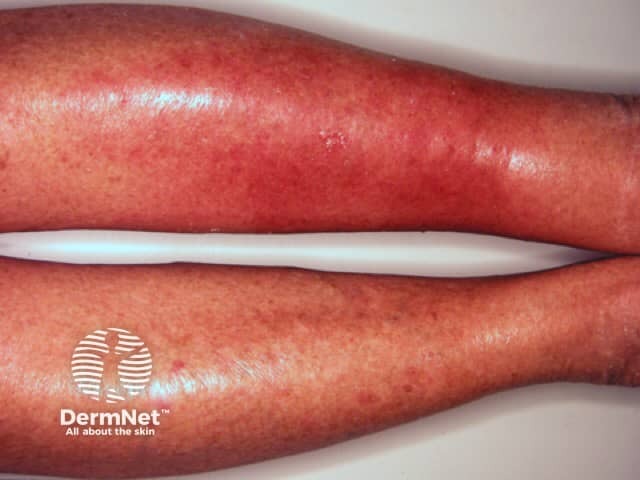
Cellulitis
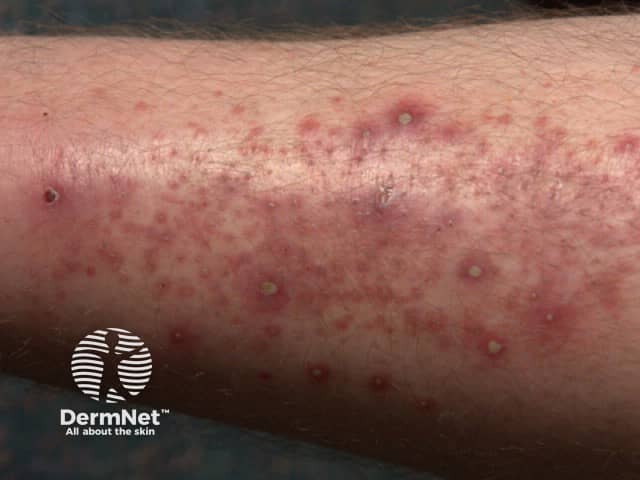
Folliculitis
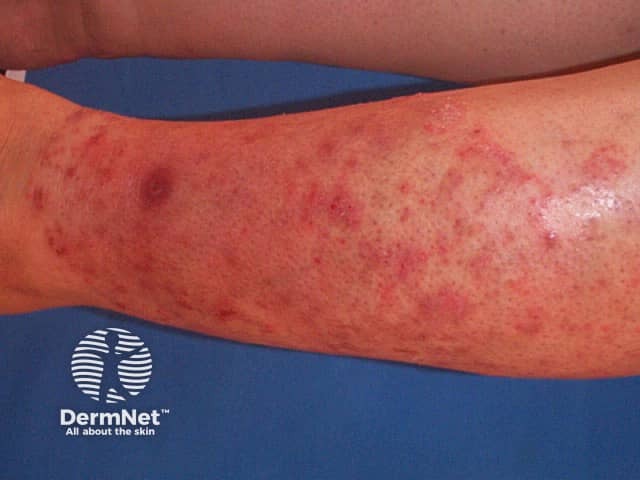
Tinea corporis
Other red or purplish conditions favouring the lower legs include:
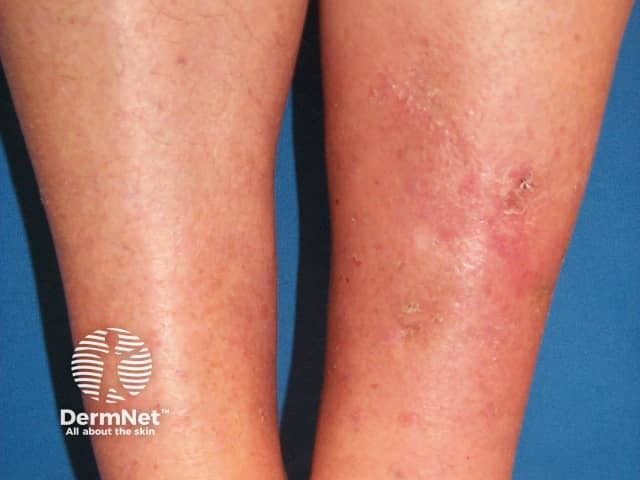
Pretibial myxoedema
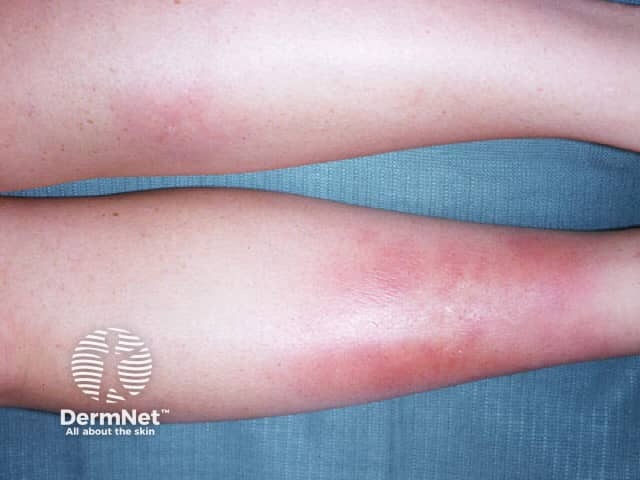
Panniculitis
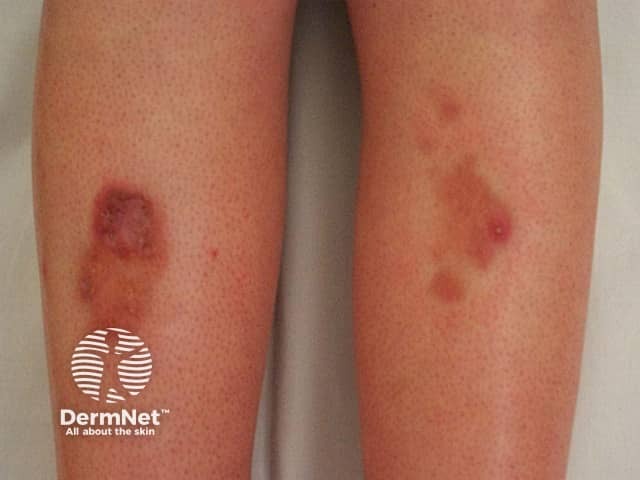
Necrobiosis lipoidica
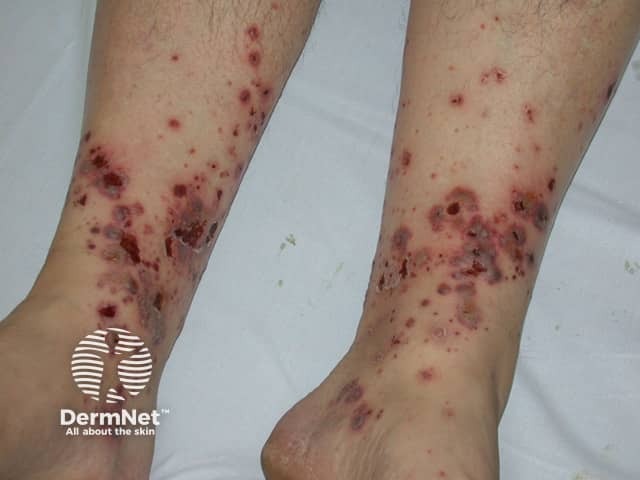
Vasculitis
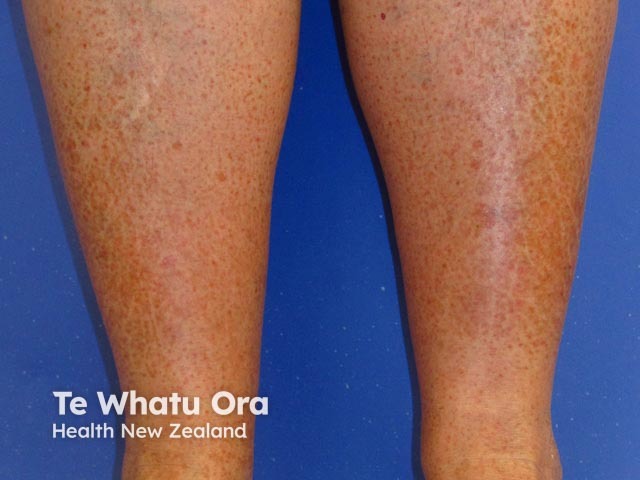
Capillaritis
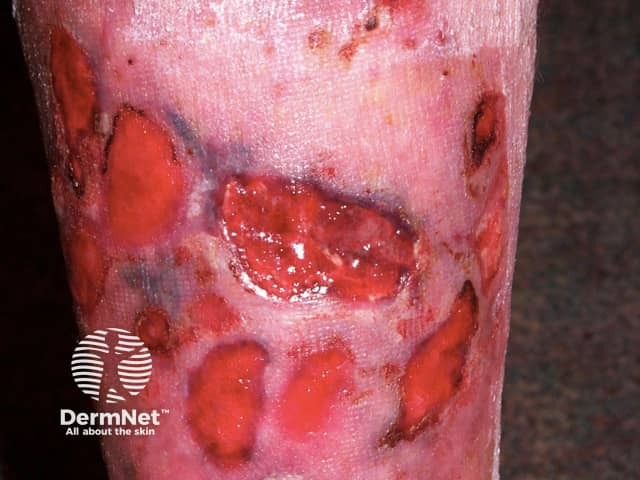
Leg ulcers
Management depends on making a correct diagnosis. General advice should include:
Avoid topical antibiotics, topical antihistamines and multi-ingredient fragranced or herb-containing emollients because of the risk of provoking contact allergy.